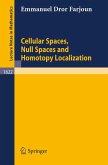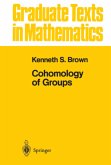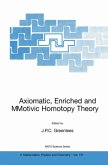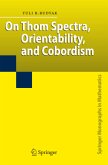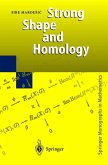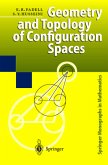The cohomology of groups has been the stage for significant interaction between algebra and topology, leading to the creation of important new fields in mathematics, like homological algebra and algebraic K-theory. This is the first book to deal comprehensively with the cohomology of finite groups.
The 2nd edition contains many more cohomology calculations for the sporadic groups, obtained by the authors and their collaborators over the past decade. Chapter III on group cohomology and invariant theory has been revised and expanded. New references arising from recent developments in the field have been added, and the index substantially enlarged.
Some Historical Background This book deals with the cohomology of groups, particularly finite ones. Historically, the subject has been one of significant interaction between algebra and topology and has directly led to the creation of such important areas of mathematics as homo logical algebra and algebraic K-theory. It arose primarily in the 1920's and 1930's independently in number theory and topology. In topology the main focus was on the work ofH. Hopf, but B. Eckmann, S. Eilenberg, and S. MacLane (among others) made significant contributions. The main thrust of the early work here was to try to understand the meanings of the low dimensional homology groups of a space X. For example, if the universal cover of X was three connected, it was known that H2(X; A. ) depends only on the fundamental group of X. Group cohomology initially appeared to explain this dependence. In number theory, group cohomology arose as a natural device for describing the main theorems of class field theory and, in particular, for describing and analyzing the Brauer group of a field. It also arose naturally in the study of group extensions, N
Hinweis: Dieser Artikel kann nur an eine deutsche Lieferadresse ausgeliefert werden.
The 2nd edition contains many more cohomology calculations for the sporadic groups, obtained by the authors and their collaborators over the past decade. Chapter III on group cohomology and invariant theory has been revised and expanded. New references arising from recent developments in the field have been added, and the index substantially enlarged.
Some Historical Background This book deals with the cohomology of groups, particularly finite ones. Historically, the subject has been one of significant interaction between algebra and topology and has directly led to the creation of such important areas of mathematics as homo logical algebra and algebraic K-theory. It arose primarily in the 1920's and 1930's independently in number theory and topology. In topology the main focus was on the work ofH. Hopf, but B. Eckmann, S. Eilenberg, and S. MacLane (among others) made significant contributions. The main thrust of the early work here was to try to understand the meanings of the low dimensional homology groups of a space X. For example, if the universal cover of X was three connected, it was known that H2(X; A. ) depends only on the fundamental group of X. Group cohomology initially appeared to explain this dependence. In number theory, group cohomology arose as a natural device for describing the main theorems of class field theory and, in particular, for describing and analyzing the Brauer group of a field. It also arose naturally in the study of group extensions, N
Hinweis: Dieser Artikel kann nur an eine deutsche Lieferadresse ausgeliefert werden.
From the reviews of the second edition: "This book is very different from other treatments since it emphasizes the computational aspects of the cohomology of finite groups with coefficients in a field. ... I say merely that each mathematician interested in algebra and topology should have a copy of this book on their shelf and make sure that their librarian gets one as well. Overall I thoroughly recommend this book and believe that it will be a useful book for introducing students to cohomological methods for groups." (Manuel Ladra Gonzalez, Zentralblatt MATH, Vol. 1061 (12), 2005)


